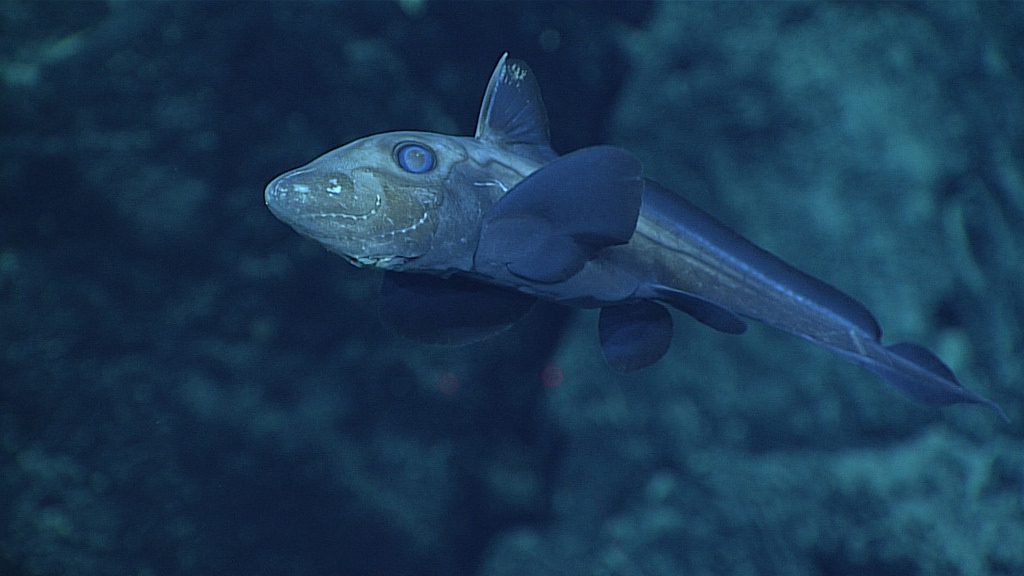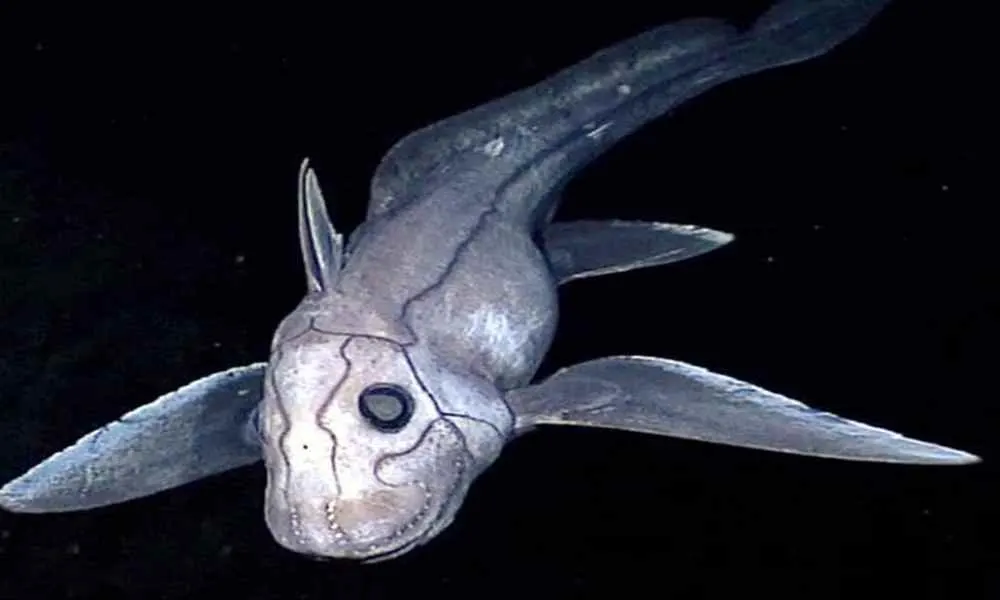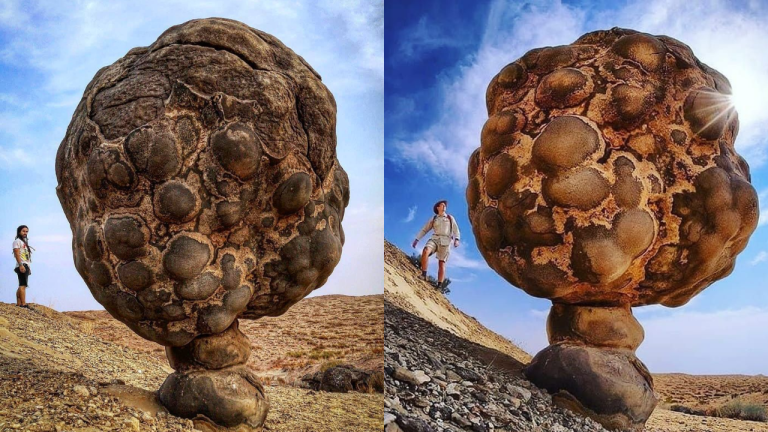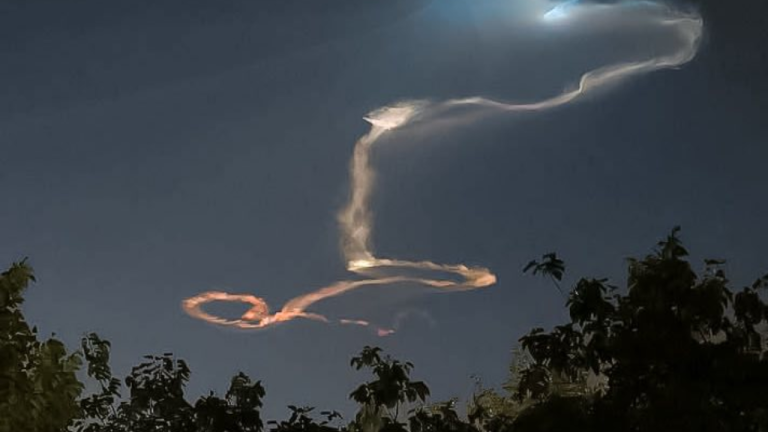The abyssal ghost shark, aka Pointy-nosed blue chimaera, is one of the ocean’s most unique creatures. With its almost ethereal appearance, this deep-sea creature is a true fascination. The ghost shark is noted for its long, skinny body and large eyes. Their eyes are backed with a reflective tissue layer that gives an impression of glowing in the dark. They lurk in the deep dark ocean depths of over 8200 feet making it challenging for researchers to study. However, in 2009, one of the remotely operated vehicles sent to ocean depths captured a glimpse of this eerie-looking shark. Let’s dive into learning more about this ghostlike creature and its first appearance on camera.

The Ghost Shark’s Habitat and First Capture!
The abyssal ghost shark, scientifically known as Hydrolagus trolli, is primarily found in deep oceanic waters. The exact population of the ghost shark is unknown. This lack of data stems from the difficulty in accessing their deep-sea habitats.
While sightings are rare, they have been reported in various parts of the world. In 2009, the MBARI sent a remotely operated vehicle, or ROV, to dive the depths of 6,700 feet in California and Hawaii. They were not on the lookout for Ghost sharks. However, the ROV came across this ghostly-looking figurine of the shark. After analyzing the video they concluded that it was a pointy-nosed blue chimaera. According to the journal ‘Marine Biodiversity Records,’ this is a species that is typically found near Australia and New Zealand.
Biological Mysteries of the Ghost Shark
Unlike many of its shark relatives, the ghost shark possesses a distinct dental structure. Sharks usually have razor-sharp teeth but these Chimaeras lack such teeth structure. It has tooth plates instead of individual teeth. This adaptation suggests a diet that differs significantly from other predatory sharks.
The upper jaw plates of these ghost sharks are sharp, and their lower jaw plates are flat. This is an adaptation to crush the prey held by the upper jaw. Their movement is also unique. Another surprising fact is that their teeth continue to grow, unlike other sharks’s teeth. Ghost sharks are known to be less agile, relying on slow, deliberate motions. This is a likely adaptation to the high-pressure, low-light conditions of the deep sea.
Apart from their unique teeth structure, another adaptation is their large pectoral and pelvic fins. This helps ghost sharks or Chimaeras to swim long distances with less energy.
The Ghost Shark’s Vision
The large, distinctive eyes of the ghost shark are thought to be an adaptation to the dark environments of the deep ocean. However, the extent to which they can see remains a mystery. Their eyes protrude to the front and absorb as much light as possible in the depths with hardly any light. They also have a reflective tissue in the eyes called the tapetum lucidum that helps in having better vision in low-light conditions.
Their rarity is attributed not only to their preference for deep, inaccessible areas but also to their likely low reproduction rates, a common trait among deep-sea species.

Conclusion
The ghost shark remains one of the ocean’s most intriguing mysteries. Their elusive nature and deep-sea dwelling continue to challenge scientists and spark the public’s imagination. As we delve deeper into the ocean’s depths, the ghost shark stands as a reminder of the vast unknowns still to be explored and understood. Continued research and conservation efforts are vital in unveiling more about these mysterious creatures and ensuring their survival in the deep ocean’s unseen world.
Also read,
Careful Craft Of Woodpeckers Preparing For Winter | Their Winter Homes Can Store 50,000 Acorns!











